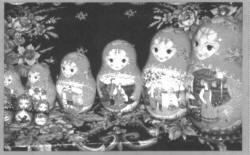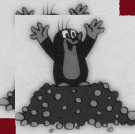|
| ||
|
An Overflowing or Controlled Stream of Discussion? Our city has been appointed the European Capital of Culture 2010 and thus got the chance to become a mediator, a transmitting space for other peripheries and centres. Our project is basically in concord with the plans and intentions of the city as it is open and aims to synthesise central and regional characteristics. We have not only joined the EU but have also become a prominent sphere in it - we are in the focus of attention. We will see now whether Pécs has a special atmosphere and attractive force, in which way it is European, how it mediates its traditions and in what kind of cultural present it exists, what kind of intellectual-emotional traditions it has, how it can exploit them here and now, whether the roots nourish the tree - and to recall the major theme of this volume as well - whether the tree of the world has root hairs in Pécs. We ask whether our city is able to cultivate its past, keep its inspirations alive and inherit its vital energies. We will also see how it can treat its partners, „visitors" and anybody interested in its traditions, whether it shares the plenty and the benefits with them - we will wonder these things in the year of Heritage.
For four years, the influence, subject and organic structure of our P/C volumes have been transgressing cultures and boundaries. And now the abundance of languages is to come, as the Pro Renovanda Cultura Hungariae Foundation finances the foreign language versions of Hungarian publications this year. And it was time, we felt, to express ourselves about world literature as before, but not only in Hungarian any more. So far, we have exchanged ideas from and about other cultures and language communities in Hungarian - relating them to us by bridging the gap between their opinions and ours. Literatures we have known and studied have been reflected in our eyes. From now on other authors may also join us who treat their literature immanently - taking part in the widening discussion about themselves and in their mother tongues.
We were multicultural and have become multilingual. Everyone of us translated or got somebody to translate the summary of his/her former texts for our third volume into a language other than the language of his/her major. If s/he had used a world language, now s/he could choose a regional one in the group - and vice versa. It is not a matter of chance who wants to send a message to which territory, point of the compass, part of the mental map - waiting for a response. We welcome summaries that set up a dialogical relationship with other texts, i.e. the translator may express him/herself more directly than is usually expected - commenting on the text from inside. So let us understand translation in a different sense - to be included in the reflected subject.
Thus, our discussion-project will become readable in almost everywhere in the world. Besides the emergence of singular and accidental phenomena induced by the individual languages, rhythmical and inevitable reverberations of ideas also characterise our polylingual enterprise. And, hoping that the world tends to become multilingual, our potential foreign readers will not be at the mercy of a single language. They may enter our concentrated discourse at several points in the course of the volume and construct an alternative pattern from the hypothetical whole implied by the mosaics.
Surprisingly few of our members promoted the simplifying and practical idea to agree on one or two specific languages for the summaries or even to settle one common language. It would have contradicted our basic strategy and attitude. We do not intend to contribute to the hegemony of any major languages of the world, however easy it would make communication. Such an act would violate our many-coloured nature, our equal importance and the democratic principles of our polylogue.
The
multiplicity of
languages,
again, reinforces and highlights the Don Quixotic nature of our enterprise
as it objects to the inevitable assimilative disappearance of languages. It
keeps minor languages alive by presuming their equal significance. However,
a fully balanced attention seems also artificial as if we are unable or
unwilling to distinguish dominant and marginal, significant and less
important, well-known and almost unknown cultural-lingual areas. Such an
approach cannot create a hierarchy for literary trends and artists of a
given language. The researcher decides which part of the hypothetical whole
to examine and how. Naturally, s/he has to argue for his/her position
justifying decisions and providing a context for the introduced figures and
phenomena. Besides several other missions, we intend to popularise not yet
translated and almost unknown works in this project. In doing so we are
ahead of the general reception and selection of texts, as we do not wait for
Hungarian publications if we are already acquainted with them in their
original language, in addition, we do not only discuss lingually accessible
works which are popular, have already been reflected on by authorative
circles and which, logically,
As one can see, we do not accept each other's ideas without criticism, and
we do not take anything for granted by accepting the official appreciation
of our colleagues. However, a Western success story may inevitably
contribute to our more positive self-
The international promotion of Hungarian literature together with the Hungarian and foreign reception of Hungarian authors living abroad also comes into focus for a moment or two. I have intended to highlight this approach, too. This kind of perspective and information significantly contributes to our self-knowledge. To make the picture complete, Jolanta Jastrzębska is asked about the effect of Hungarian and Polish literature on Dutch culture. Can they show a mirror to it, reinforce it, and what kind of absences or shortcomings can they externalise for Dutch literature? And if it cannot be answered this way, she is kindly asked to provide us with an introduction to the unknown Dutch literature - in relationship with what has been discussed so far...
We are at the crossroads of cultures - both our literature and ourselves. If
not as spectacularly as our above-mentioned colleague, the number of
connections is at least
to several works of world literature in a third, transmitting language, the Slovak. His "confession" was a revelation for the participants of the programme - bringing about a consensus on the necessity of translations, adding that sometimes what we can read is not the original and not a translation to our mother tongue either. We may consult "other", seemingly unjustifiable texts in a third language because of practical ('access') reasons, which also demonstrates the way things go, the logic of culture's functioning, its pragmatic nature. Now we can admit explicitly that we perceive various phenomena in the world by a multiple mediation process - together with its inspirations and dangers. We are at the translator's mercy, which is an old problem (it was horrible to face with the mixing up of realia in the French criticism on Szabó Magda's autobiographical novel The Door (Ajtó), a selection of which was published in ÉS[2]); however, we are on the way to realise that existence by translation is a general ontological model as our whole life is pervaded by mediation. There are more progressive examples for the latter (the same column in ÉS provides significant Norwegian criticisms on The Failure (my translation of the title) [A kudarc] by Imre Kertész - interpreting it as a unique reconsideration of metafiction). The translation of a work is a cultural (re)interpretation; a link to, and the expansion of, the horizon. The text's coming to existence in a new language develops its double identity, moreover, the work will be reborn at a certain point of a different semantic-cultural network. Although our approaches were different, everybody reflected on this dimension. Nobody was unaffected by the new ontological status of a text after its translation. The effects of lingual differences may be registered at several points because the translations we make and on which we depend necessarily rewrite the semiotic structure of the source language. Language gets going at different points and enables us to use different puns different from the original. The present volume has specially raised our interest very much in terms of tracing the similarities and differences of the texture and the semantic map between that the source and the target language. The cultural realia do not correspond to each other, they essentially diverge. This is the precept of interculturality and translation-hermeneutics. The ways of converting, the compatibility of languages and cultures are inherent questions of our project. Our authors are mostly translators as well, at once and give an account on their experience; in addition, they follow with attention how the translated works function in the given country.
We explain and we paraphrase the titles and puns which cannot be translated.
Our new colleague also seem to be sensitive to the possibilities implied by
the language
The above absences reminded me of the scentless protagonist in the Swiss Suskind's Perfume (Das Parfum), the demonic nature of the German Chamisso's shadow-less Peter Schlemihl (Peter Schlemihls wundersame Geschichte) and the destructive force and infertility of the tone- and blurless light in The Master and Margarita (Мастер и Маргарита) by the Russian Bulgakov.
I encouraged Erika Hammer to realise her radical and fascinating project and compare the German-related authors of the last volume already examined by her colleague. The differences in methodology may completely legalise the correspondence of subjects and, as a result, the double analysis of literature is possible without redundancy.
We are about to outline cultures and literatures, define their features, as
long as it is still possible. We are equally sensitive to similarities and
differences. We wish to consider the experience of being an outlander
as much as that of identity or analogy. We learn how to relate to otherness.
There is a lot at stake: the danger of the fundamentalist Islamic terrorism,
which has been, at the same time, outlined and generated by the
caricature-scandal, should make us learn to become more cautious and humble.
The territory of the sacred has fatefully narrowed down in Europe,
consequently, we cannot understand the feelings aroused in Islamic people
for whom even the depiction of God and man as God's creature is forbidden,
when they see the subject of their sacrosanct taboo in a blasphemous form.
How can we create an intercultural competence between their extreme
sensitivity and vehement responses and our concept of democracy and
Although we know that perfect solutions do not exist, our volumes cannot fully neglect the hottest social-political questions. We try to articulate the conflicts between cultures with the help of literature, which may take us to a better understanding - these are the problems of migration and the Balkans, discussed in this volume. We work on cultural hermeneutics instead of national characterology. We are about to examine what can be written in a given culture and how it is provided and assisted by institutions, traditions, history, written and spoken language and coincidence. And, as it is less and less possible to speak about discrete phenomena and cultural entities, these are the common spaces of coexistence and co-influence where we can examine our objects that overlap each other in a greater or smaller extent.
Everything can be seen from the other way round; the history of a translated work will also contribute to the life of the original. This point of view is ours, and so is the subjective canon: a literary history outlined by our authors. Both are in progress. However, none of them is exclusive. Several authors have taken the geographical peripheries and centres - measuring their cultural temperatures, the distribution of cultural values in the centre and on the margins. Others have commented on alternative literary facts or have written their accounts from a little-known point of view, the female one. The aspect of population, the minority existence caused by migration has also got into the foreground. And our links have also been created as a result of our willingness to adopt each others' methods. Our consciousness of being on the boundaries enables us to handle various registers. Naturally, the personality is as decisive as the represented culture; moreover, many facts of a given culture seem different beyond its boundaries - creating a new, unexpected order.
We have opened up our cultures for each other and, setting out on our ways, we also describe them in their own languages. We have made another step to eliminate boundaries. Are we almost boundless? I think it is such a misinterpretation of our concept as the literal understanding of the extremes in the title or the self-undervaluating stigmatisation of being "peripheral". Our enterprise is a conscious game stressing the notion of boundaries, intermediate state, translation, transmission and alternativity. Instead of the confusion and loss of our message - it logically constructs certain ranges of thought, and we intentionally carry out our researches to meet the others from time to time and to apply as many languages as possible. We utilise each other's ideas to discover our own cultures, each other's perspectives to improve our own accounts, and we ask questions and propose new fields of study.
It is The Other which is constantly thematized in our project; postcolonialism, feminism and hermeneutics also target the Other, the otherness living beside and inside us. Now we have asked the question if, among these transitory positions and processes, there is space for the spiritual transformations, if the earthly-horizontal transgressions can be distinguished from the vertical-sacral ones. The following texts of our conferences dominantly highlight the act of suppression. Contemporary (and not only Hungarian) writers may lack a developed imagination concerning the other world(s)... It seems that supernatural experience is not transferred to literary language nowadays, which, rather, leaves "only" a tellingly mute trace at the locus of the utterance.[8] [1] A Hungarian literary journal: "Literature". [2] Élet és Irodalom, i.e. "Life and Literature" - a Hungarian newspaper on literary and political issues. [3] "Fish, (sense of) hearing, death". A brunch of unrelated Hungarian words whose similar forms make them, interestingly, interrelated. There is such a peculiar "semantic bond" between the English "tale", "tail" and "detail". [4] Similar to "tongue" (organ and language). In Hungarian there is only one word, "nyelv", in English two, "tongue" and "language" while in German also two but without a semantic "interface", "Zunge" and "Sprache" for the two concepts. [5] "tongue-fish" ("language-fish"). [6] "silent, dumb". [7] "Criticism", a Hungarian journal. [8] The footnotes are written by the translator. |
||
|
Kiadványunk felsőoktatási segédanyag, mely A Pécs / Sopiane Örökség Kht,a Pro Renovanda Cultura Hungariae Alapítvány „Klebelsberg Kunó Emlékére” Szakalapítványa,valamint A Pécs2010 Programtanács „Európa Kulturális Fővárosa - 2010” cím elérésére kiírt pályázatán megítélt Nívódíj segítségével, a kiadványhoz kötődő konferencia pedig a Pécsi Tudományegyetem Rektora, a Pécsi Tudományegyetem Bölcsészettudományi Karának Dékánja, a Modern Irodalomtörténeti és Irodalomelméleti Tanszék, a magyar szakos levelező képzés és a Liber-Arte Alapítvány által nyújtott támogatásokkal jöhetett csak létre. Segítségükért ezúton is köszönetet mondunk. |
||
 Edit V. Gilbert
Edit V. Gilbert



